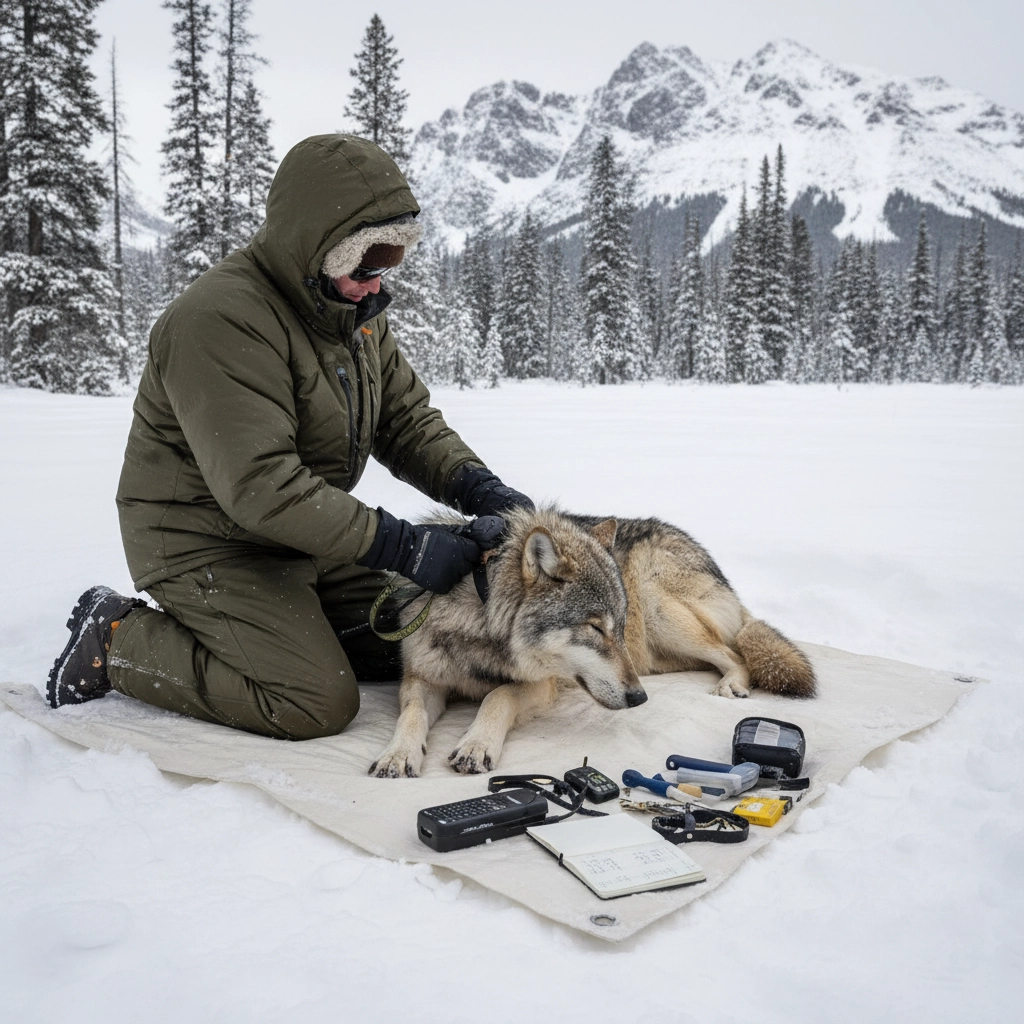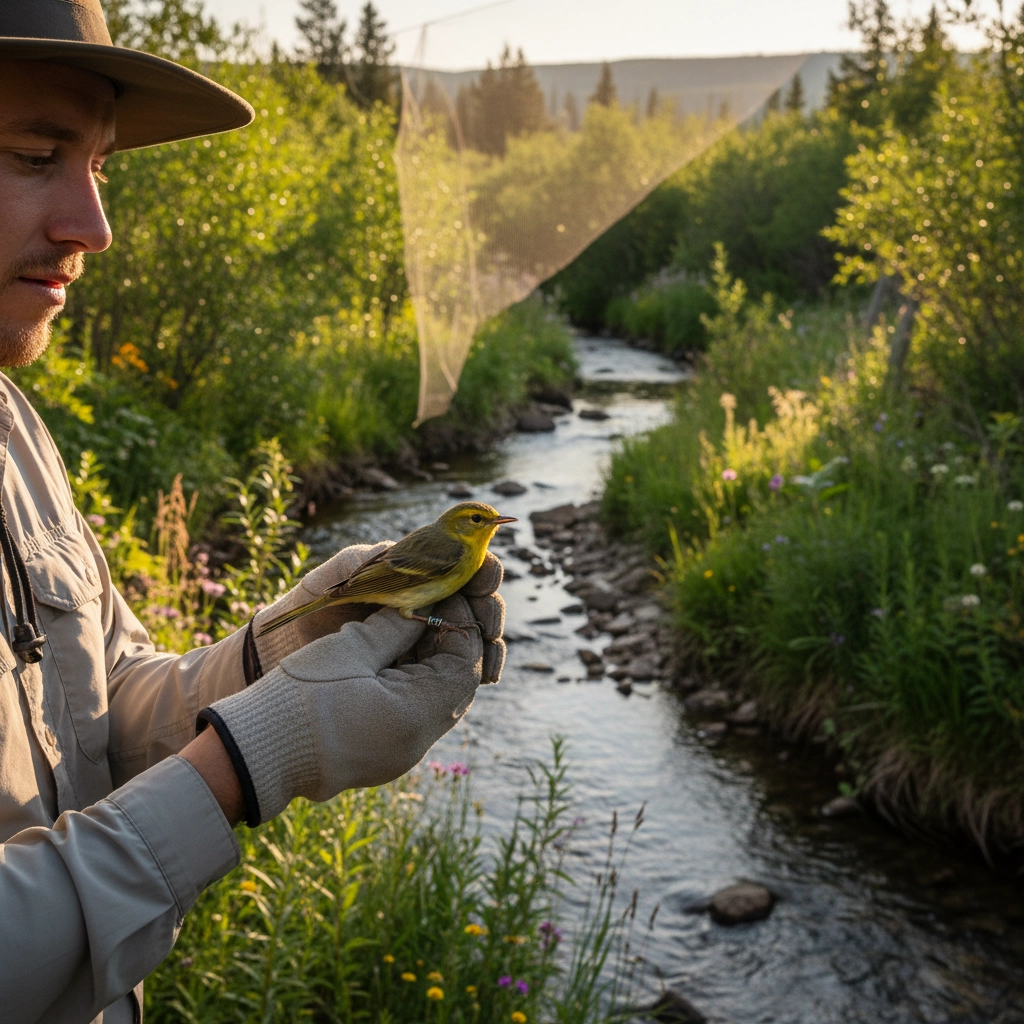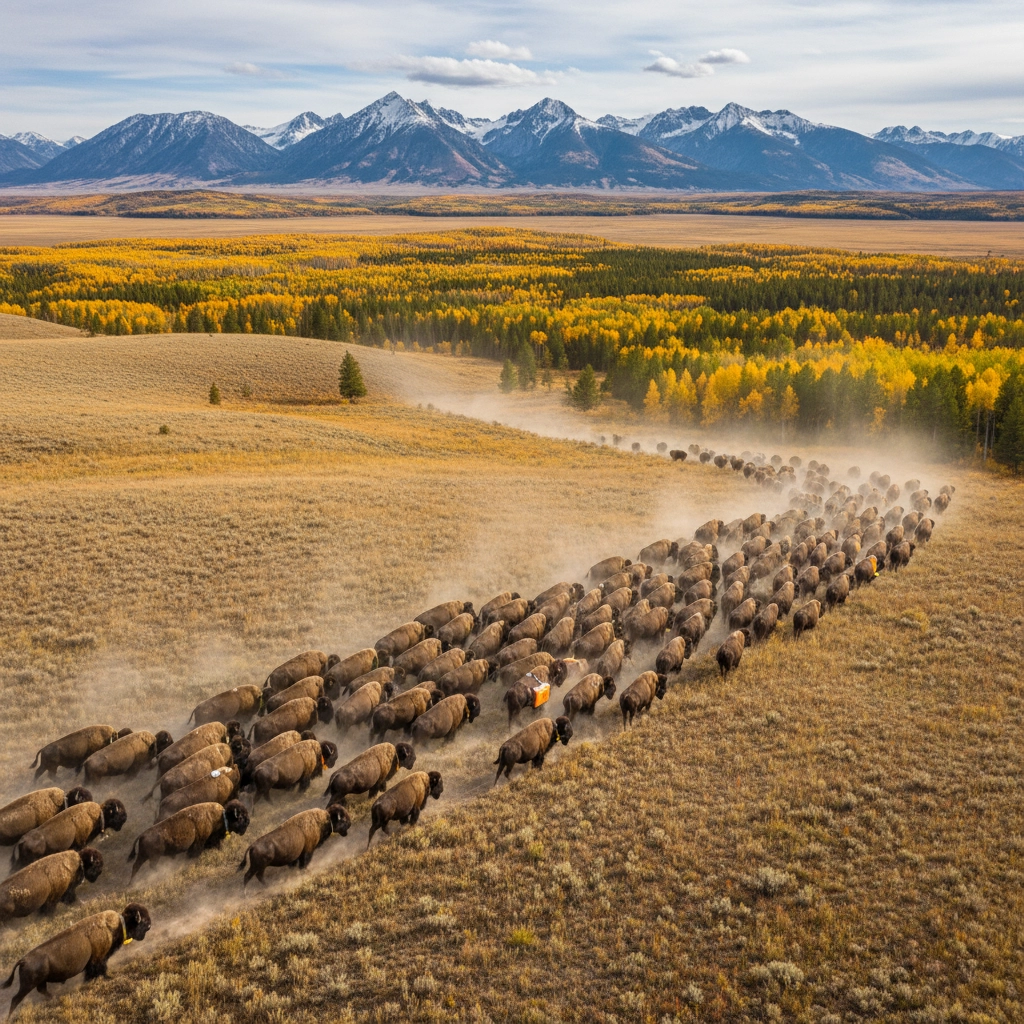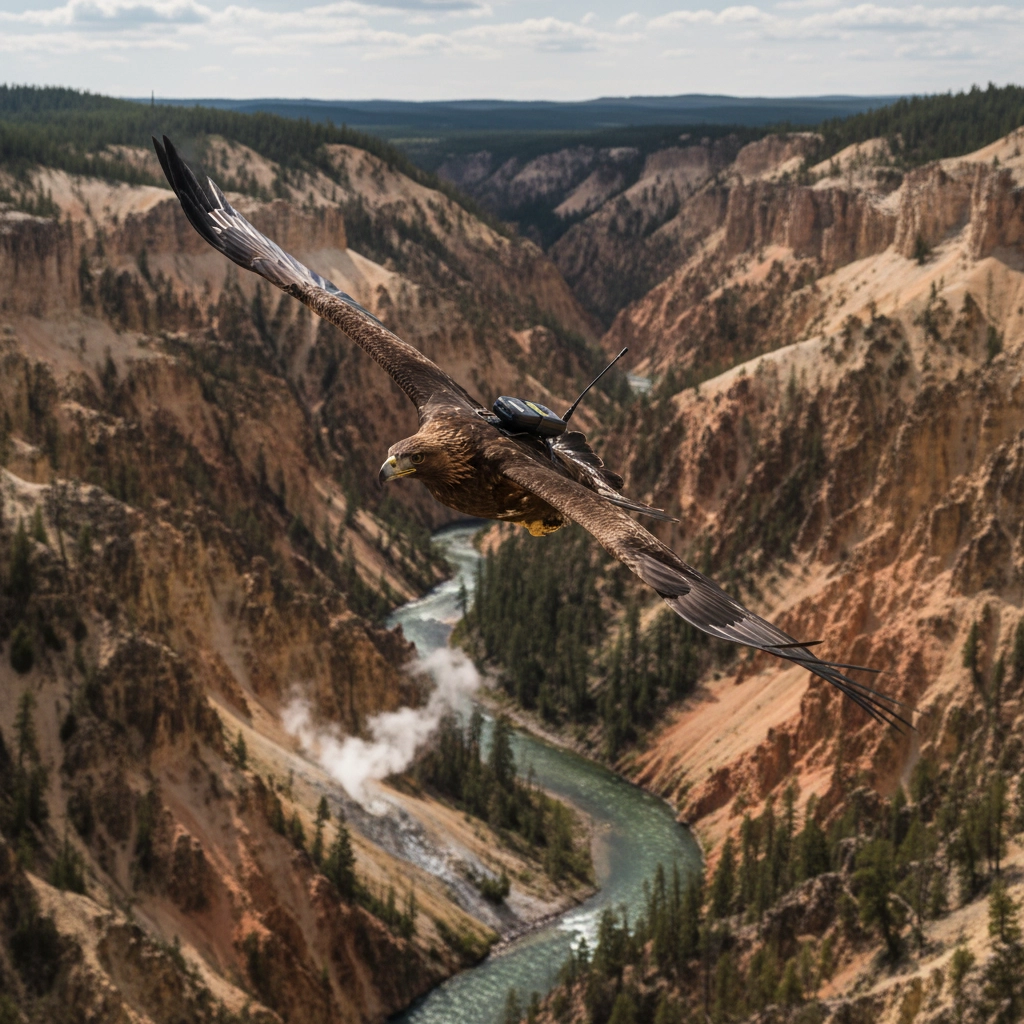Scientific Monitoring and Research: How Yellowstone Tracks Animal Populations
- Caleb Mullenix
- Oct 28
- 5 min read
Understanding how Yellowstone National Park tracks its diverse wildlife populations is essential for educators preparing students for meaningful field experiences. The park's sophisticated monitoring systems provide a compelling case study in modern conservation science, demonstrating how researchers combine cutting-edge technology with traditional field methods to gather comprehensive data on wildlife movements, population dynamics, and ecosystem interactions.
The Foundation of Wildlife Monitoring: Radio Collar Technology
Yellowstone's primary tracking method centers on radio collar technology, representing a cornerstone of modern wildlife research. Scientists capture wolves, elk, and other large mammals during carefully planned winter operations, fitting them with either GPS collars that transmit daily location data via satellite or VHF (very high frequency) collars tracked from ground-based or aerial observation points.
The strategic approach to wolf monitoring exemplifies scientific precision. Researchers collar approximately 30% of each wolf pack, accounting for natural losses due to mortality, collar failures, or pack dispersal. During capture operations, scientists collect blood samples, record physical measurements, and determine each animal's sex and age, creating comprehensive databases of individual characteristics that inform long-term population studies.

This collar-based monitoring extends systematically to elk populations, where researchers fit adult female elk with radio collars to estimate population size, survival rates, causes of death, habitat utilization patterns, and migration routes. The GPS data collected from both predator and prey species allows scientists to examine complex predator-prey interactions by analyzing how wolf presence, pack numbers, and kill locations influence elk movement patterns throughout the ecosystem.
Non-Invasive Monitoring: Innovation in Wildlife Research
Beyond physical capture and collaring, Yellowstone has invested significantly in non-invasive monitoring technologies that provide behavioral and demographic insights without disturbing natural wildlife behaviors. These methods demonstrate how modern technology enhances traditional field biology approaches.
Autonomous recording units (ARUs) represent a particularly innovative monitoring tool, capturing wolf howls throughout the park to study vocalization patterns and develop bioacoustic methods for estimating wolf numbers. This technique proves especially valuable in remote areas where direct observation presents logistical challenges.
Remote cameras complement acoustic monitoring efforts, documenting wildlife presence and behavior across diverse park habitats. These systems operate continuously, providing 24-hour surveillance that captures nocturnal behaviors and rare wildlife interactions impossible to observe through traditional methods.

For aquatic species monitoring, researchers employ environmental DNA (eDNA) extraction from water samples to understand fish species distribution and presence. This cutting-edge technique represents the evolution of fisheries science, allowing comprehensive species assessment without physical capture or handling.
Specialized Monitoring Programs by Species
Wolf Population and Behavior Studies
The Yellowstone Wolf Project maintains comprehensive long-term monitoring spanning three decades since wolf reintroduction in 1995. Beyond collar data, researchers study genetic profiles by collecting DNA samples from handled wolves and deceased individuals, revealing pack interactions, territorial behavior, scent marking patterns, and social structure dynamics.
The integration of telemetry data with bioacoustic analysis represents a multi-faceted approach to understanding wolf population dynamics across Yellowstone's expansive landscape. This combination provides researchers with complementary data sources that strengthen population estimates and behavioral assessments.
Songbird Assessment Programs
Recognizing knowledge gaps in Yellowstone's songbird populations, researchers established MAPS (Monitoring Avian Productivity and Survivorship) songbird-banding stations in the Northern Range's willow-lined riparian corridors. Through standardized bird banding protocols, scientists gather data on songbird abundance, diversity, productivity, survival rates, juvenile-to-adult ratios, and population turnover between breeding seasons.
This work evaluates how effectively Yellowstone's willow habitat supports songbird populations while identifying potential threats affecting these communities, demonstrating the interconnected nature of habitat conservation and species management.

Large Ungulate Migration Tracking
Migration studies extend beyond elk to include moose, bighorn sheep, and mule deer movements using GPS collar technology. The elk migration tracking study examines how these animals move through Wyoming both within and beyond park boundaries, addressing fundamental ecological questions about which species sustain the Yellowstone ecosystem and how landscape changes shape their movement patterns.
Scientists recognize that collared animals may be lost to hunters outside park boundaries, viewing this as routine aspects of studying migratory populations rather than research complications. These studies inform regional wildlife management decisions extending far beyond park boundaries.
Predator-Prey Relationship Analysis
Yellowstone maintains ongoing studies of wolf-prey relationships by analyzing diet composition and hunting frequency across different seasonal periods: early winter (mid-November to mid-December), late winter (March), and spring-summer (May-July). This temporal approach reveals how predator behavior adapts to seasonal prey availability and environmental conditions.
Researchers have revitalized calf predation studies, previously conducted from 2003-2005, to understand which predators most significantly impact newborn elk survival rates. These studies inform management decisions about predator-prey balance and ecosystem health indicators.
Advanced Species-Specific Research
Bison Population Management
Bison monitoring incorporates aerial surveys, GPS collar data, and field observations to track population trends and movement patterns. This multi-method approach ensures comprehensive understanding of this iconic species' dynamics across the park, informing management decisions about population control and habitat preservation.
Golden Eagle Studies
Scientists deploy telemetry units on golden eagles to track movement patterns and demographic characteristics within the park, expanding understanding of predator ecology in the Greater Yellowstone Ecosystem. These studies contribute to regional raptor conservation efforts and habitat management strategies.

Vegetation and Habitat Assessment
Wildlife monitoring extends to vegetation communities that sustain all park species. Researchers employ multiple field sampling methods to assess vegetation in critical habitats like the northern ungulate winter range, comparing approaches including the historic Parker 3-step method, Daubenmire sampling, modified-Whittaker plots, and Forest Inventory and Analysis (FIA) protocols.
These methods differ in their ability to capture species richness and diversity indices, and scientists continue evaluating which approaches best inform habitat management decisions. This vegetation monitoring provides crucial context for understanding wildlife population changes and habitat quality assessments.
Winter Impact Studies
Specialized monitoring programs assess how winter vehicle use affects wildlife populations. Data collected from 2014 to 2019 demonstrated that approximately 95% of wildlife observed within 500 feet of groomed road corridors showed either no response or simply "look and resume" responses to oversnow vehicles, providing evidence about human-wildlife interaction impacts during winter seasons.
Educational Applications for Student Groups
These comprehensive monitoring programs offer exceptional educational opportunities for student expeditions. Teachers can prepare students to understand how scientific research informs conservation decisions, demonstrating real-world applications of biology, ecology, and environmental science concepts.
Students participating in Yellowstone expeditions gain firsthand exposure to professional research methodologies, learning how scientists gather data, test hypotheses, and contribute to evidence-based management decisions. This exposure strengthens STEM education outcomes while inspiring future conservation professionals.

Data Integration and Management Applications
The park's integrated monitoring approach combines data from multiple sources: radio collars, genetic analysis, remote cameras, acoustic recordings, and field observations: to develop comprehensive understanding of how individual species, populations, and entire ecosystems function.
This systematic data integration enables park managers to make science-based decisions about habitat management, predator-prey relationships, species reintroduction, and landscape-level conservation priorities. The research conducted in Yellowstone influences wildlife management decisions extending throughout the Greater Yellowstone Ecosystem and beyond.
For educators planning student expeditions, understanding these monitoring methods provides essential context for meaningful field experiences. Students witness how modern conservation science operates, gaining appreciation for the complexity and precision required in wildlife management while developing scientific literacy skills essential for informed environmental citizenship.
The sophisticated monitoring systems operating in Yellowstone demonstrate how scientific research serves as the foundation for effective conservation, providing students with inspiring examples of how careful observation, technological innovation, and systematic data collection contribute to protecting our natural heritage for future generations.



Comments